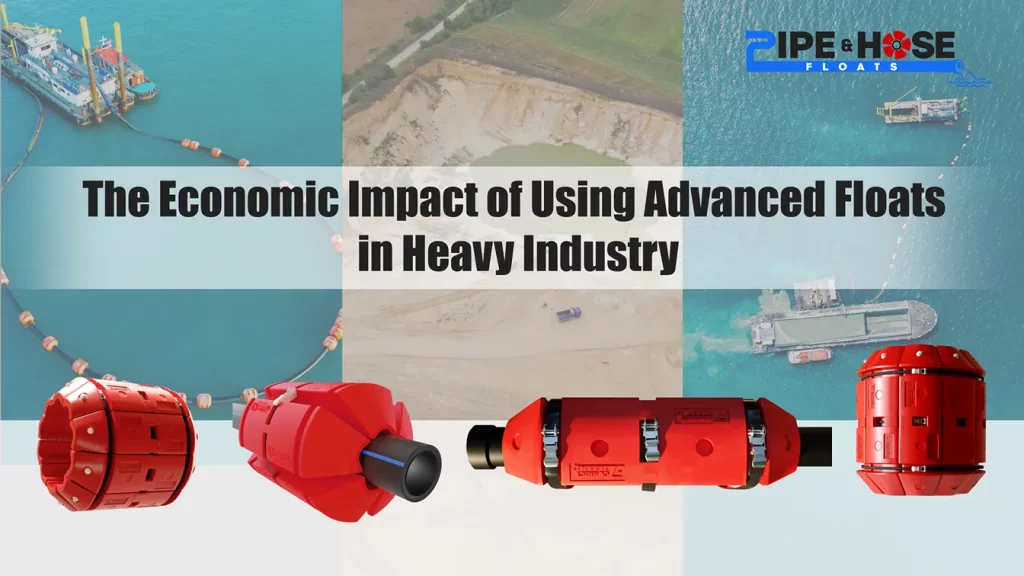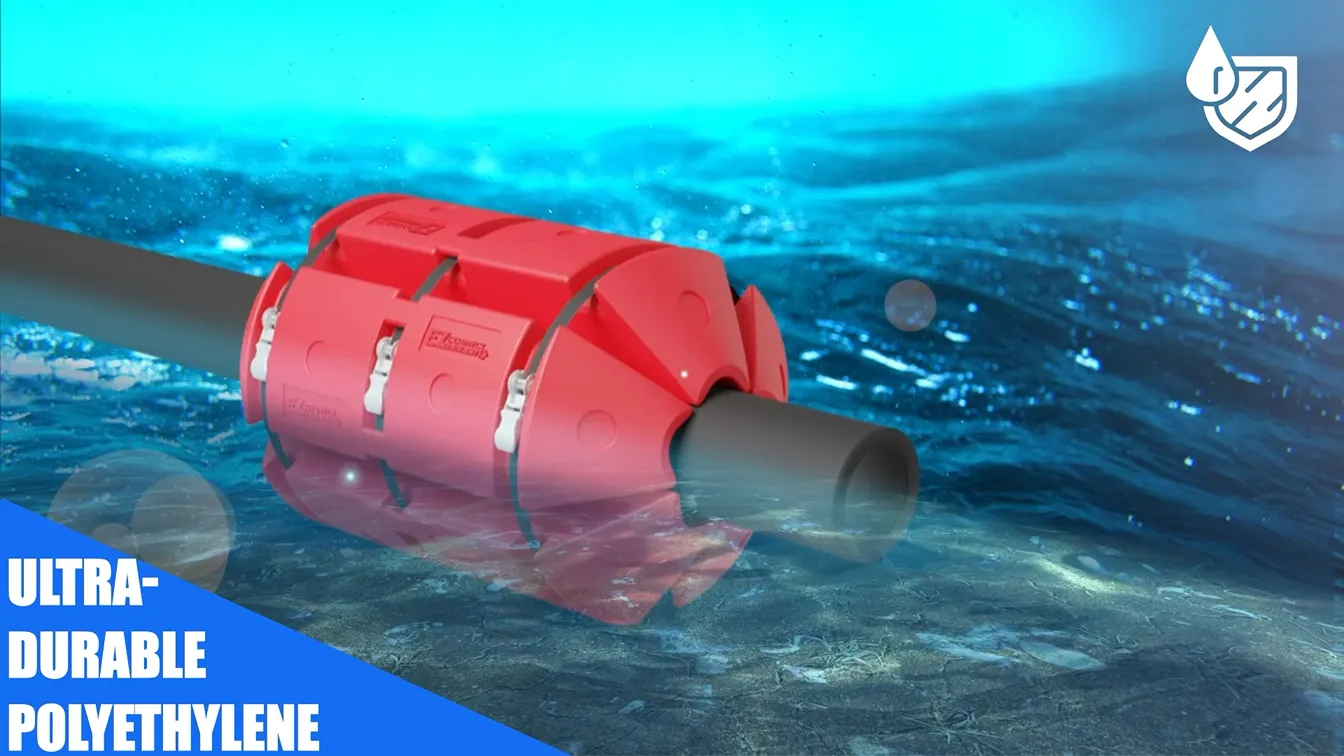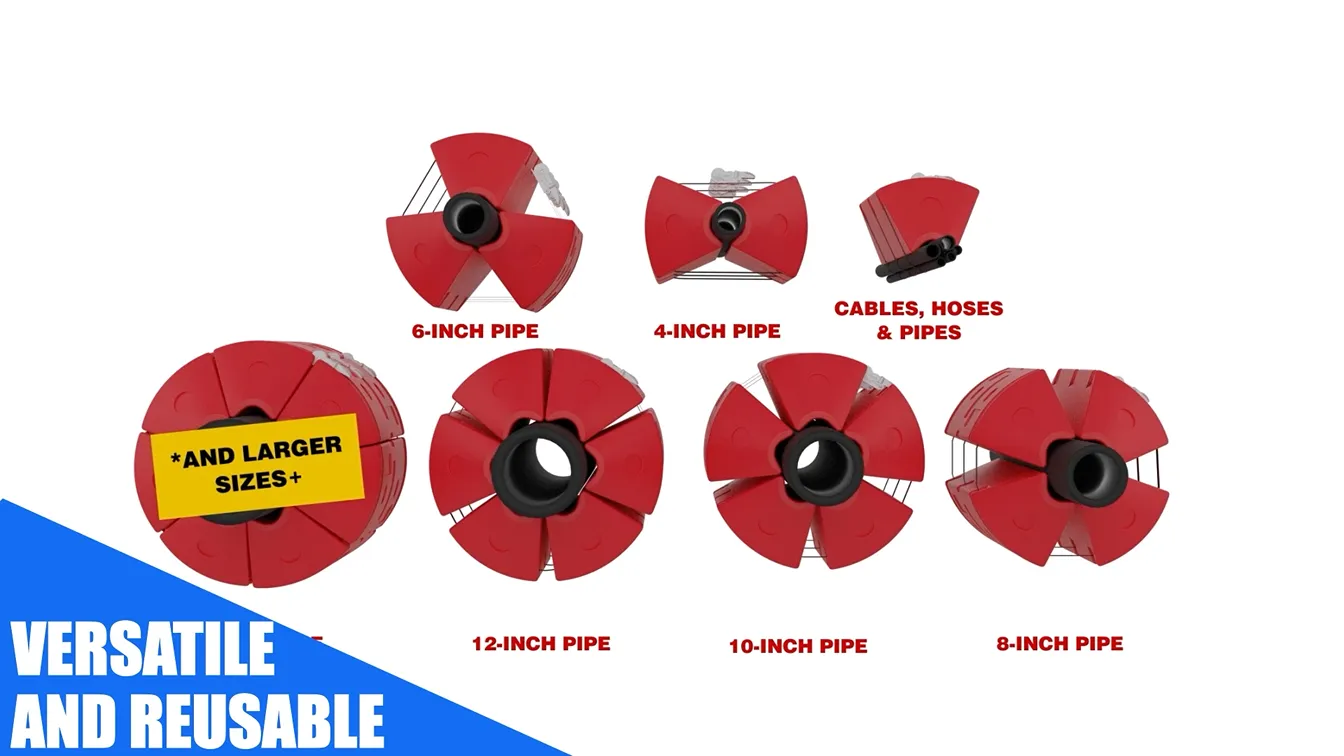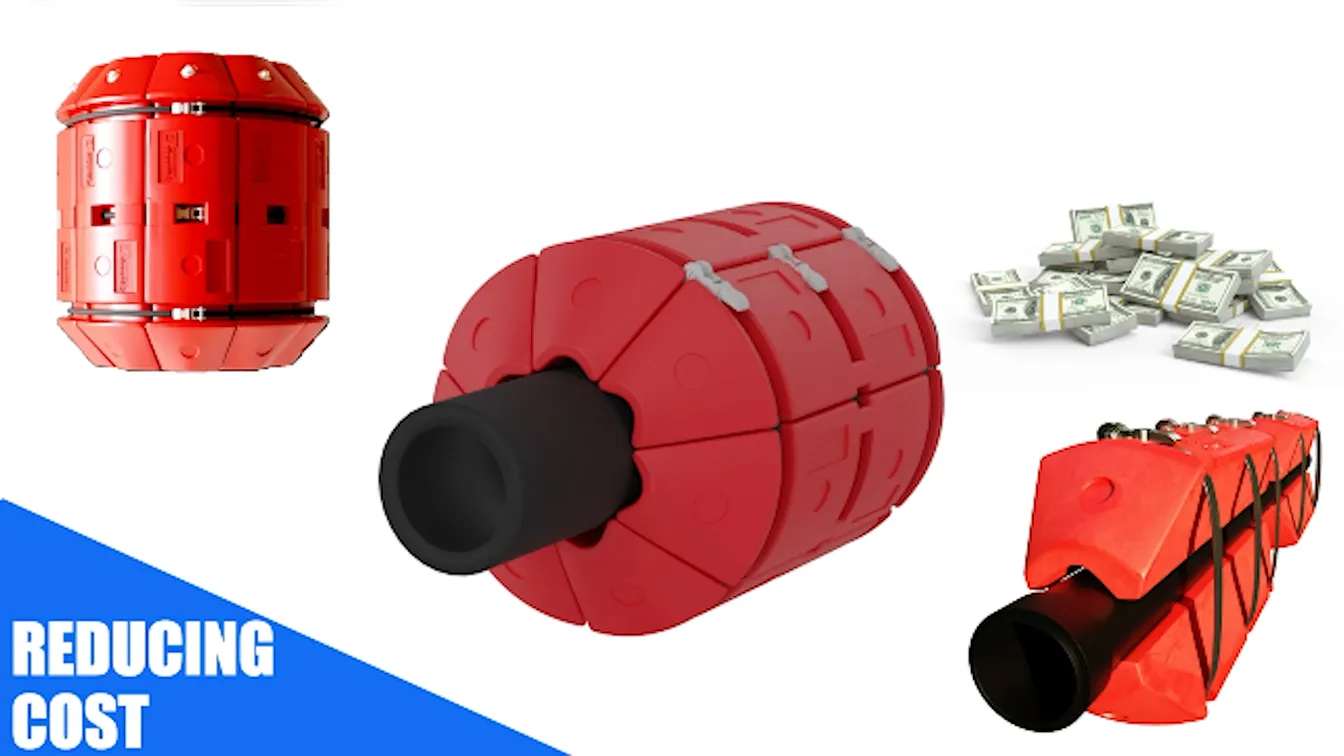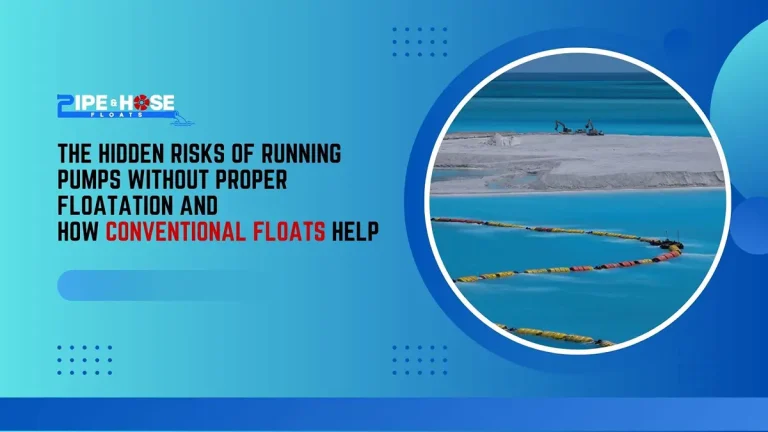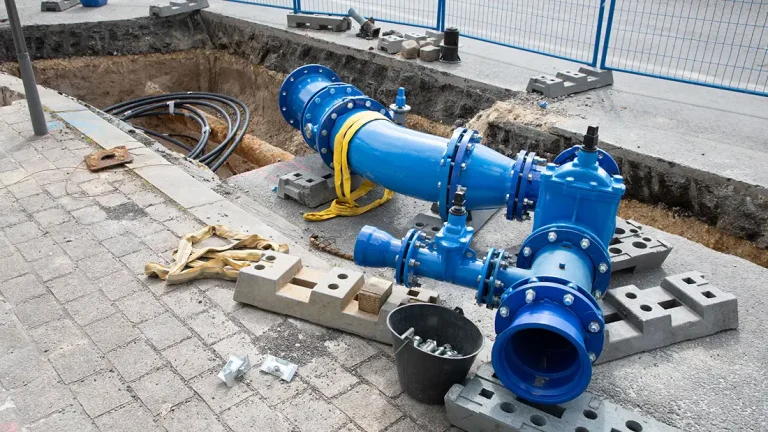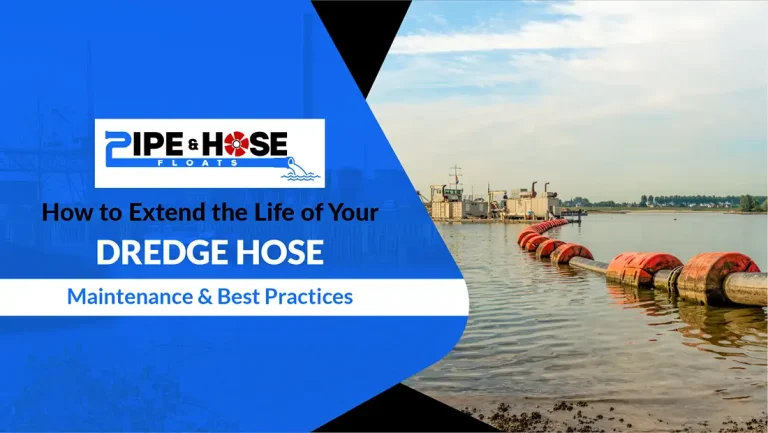Economic pressures in heavy industries such as mining and construction often revolve around operational efficiency, cost reduction, and risk mitigation. Traditional methods of managing water pipelines and hoses can be costly due to frequent maintenance, downtime, and the risk of leaks. Advanced hose and pipe floats, specifically designed for industrial applications offer solutions to these challenges.
Advanced hose and pipe floats enhance operational efficiency by ensuring continuous and reliable water flow and by providing buoyancy and support to pipelines and hoses. This reduces downtime caused by maintenance and repairs, leading to cost savings and increased productivity. Moreover, advanced floats help mitigate the risk of leaks, which can result in environmental damage, regulatory fines, and costly cleanup efforts. Adopting advanced floats in heavy industries yields significant economic benefits, making them a valuable investment for industrial pipe and hose float applications.
Cost-Benefit Analysis of Using Advanced Floats:
The cost-benefit analysis of using advanced floats in heavy industries involves weighing the initial investment against the long-term savings and benefits.
Initial Costs vs. Long-term Savings:
While the initial investment in high-quality floats may seem higher compared to traditional options, the long-term savings they offer outweigh the upfront costs. Advanced floats provide superior buoyancy and durability, reducing maintenance and replacement costs. Although the initial outlay may be higher, long-term maintenance, repairs, and downtime savings make them cost-effective.
Examples of Cost Savings:
- Reduced Equipment Wear and Tear: High-quality floats minimize stress on pipelines and hoses by providing stable buoyancy and support. This reduces wear and tear on equipment, extending its lifespan and reducing the frequency of replacements. For example, in mining operations, where heavy equipment is used in harsh environments, advanced floats can significantly reduce maintenance costs associated with equipment damage caused by shifting or sinking pipelines.
- Less Downtime: Industrial operations can be costly in terms of lost productivity and revenue. Advanced floats help prevent downtime by maintaining the integrity of water management systems, thus reducing the frequency of repairs and maintenance shutdowns. For instance, in construction projects where timely completion is crucial, using high-quality floats ensures uninterrupted water flow, minimizing delays and associated costs.
Enhancing Operational Efficiency of Pipe and Hose Floats:
Enhancing operational efficiency with advanced hose and pipe floats involves several critical factors contributing to smoother operations and increased productivity.
Smoother Operations and Increased Productivity:
Advanced floats offer superior buoyancy and stability, ensuring pipelines and hoses remain correctly aligned and supported. This reduces the risk of damage, leaks, and downtime, resulting in smoother operations and increased productivity. For example, in mining operations, where continuous water flow is essential for various processes, advanced floats enable uninterrupted operation, leading to higher productivity and output.
Technological Features Leading to Improvements:
- Material Durability: Advanced floats are often made from durable materials such as high-density polyethylene (HDPE) or reinforced plastics, which can withstand harsh industrial environments, including corrosive chemicals and extreme temperatures. This durability minimizes the need for frequent replacements and repairs, contributing to improved operational efficiency.
- Customized Design: Many advanced floats are designed with specific industrial applications in mind, offering features such as adjustable buoyancy, integrated anchoring systems, and modular construction. These design features allow for easier installation, maintenance, and adaptability to various operating conditions, ultimately enhancing operational efficiency.
- Advanced Manufacturing Techniques: Technological advancements in manufacturing processes allow the production of floats with precise tolerances and high-quality finishes. This ensures consistent performance and reliability, reducing the likelihood of failures or operational disruptions.
Sustainability and Economic Advantages of Pipe and Hose Floats:
Sustainability through Eco-Friendly Materials:
Many advanced floats are made from eco-friendly materials such as recycled plastics or biodegradable composites. These materials reduce the environmental impact of manufacturing and disposal while conserving natural resources. For example, floats made from recycled HDPE contribute to sustainability by diverting plastic waste from landfills and reducing the demand for virgin plastics.
Economic Benefits of Sustainability:
Compliance with Environmental Regulations:
Using eco-friendly floats helps industries comply with increasingly stringent environmental regulations. By minimizing pollution and reducing carbon footprint, companies can avoid fines and penalties associated with non-compliance. This ensures long-term viability and reduces the risk of legal and reputational damage.
Cost Savings and Tax Advantages:
Sustainable practices, including eco-friendly materials, can lead to significant cost savings over time. For instance, floats made from recycled materials may have lower production costs and reduced maintenance requirements than traditional floats. Moreover, companies adopting sustainable practices may qualify for tax incentives and rebates aimed at promoting environmental responsibility.
Long-Term Environmental Benefits:
Investing in sustainable pipe and hose floats provides short-term economic advantages and contributes to long-term environmental benefits. By reducing pollution and conserving resources, these floats help mitigate the impact of industrial activities on ecosystems and support the transition to a more sustainable future.
Industry Insights on the Economic Impacts of Adopting Advanced Pipe and Hose Floats:
Industry leaders in various sectors have emphasized the economic impacts of adopting advanced float technologies in industrial applications such as mining, construction, and offshore operations.
CEO of a leading mining company said, “Investing in advanced hose and pipe floats has significantly improved our operational efficiency and reduced costs. These floats have minimized downtime and maintenance expenses by ensuring stable buoyancy and preventing leaks, resulting in substantial savings.”
A project manager in the construction industry states, “The use of advanced floats has streamlined our water management processes, leading to smoother operations and increased productivity. With fewer interruptions due to equipment damage or leaks, we’ve been able to meet project deadlines more effectively, ultimately improving our bottom line.”
A marine engineer highlights the importance of advanced float technologies in the offshore sector, saying, “In our offshore operations, reliability is paramount. Advanced floats provide the stability and durability needed to support underwater pipelines and equipment. This has reduced maintenance costs and enhanced safety and compliance with regulatory standards.”
Future Trends in Pipe and Hose Floats:
Increased Demand for Advanced Float Technologies:
As industries prioritize efficiency and sustainability, there will be a growing demand for advanced hose and pipe floats that offer superior buoyancy, durability, and environmental benefits. Manufacturers must innovate and develop new materials and designs to meet these demands.
Adoption of IoT and Smart Technologies:
The integration of the Internet of Things (IoT) and intelligent technologies into hose and pipe floats is expected to increase. These technologies will enable real-time monitoring of buoyancy levels, leak detection, and remote control capabilities, improving operational efficiency and reducing maintenance costs.
Expansion into New Industrial Applications:
Pipe and hose floats will likely find applications beyond traditional industries such as mining and construction. With the rise of renewable energy projects, offshore wind farms, and aquaculture, floats will have opportunities to support underwater infrastructure in these sectors.
Emphasis on Sustainable Materials and Manufacturing:
Using eco-friendly materials and sustainable manufacturing processes will become increasingly important in producing hose and pipe floats. This trend will address environmental concerns and align with regulatory requirements and customer preferences, potentially leading to cost savings and market advantages.
Economic Implications:
The adoption of advanced float technologies is expected to have significant economic implications. While initial investments may be higher, the long-term benefits of reduced maintenance, downtime, and environmental impact will outweigh the costs. Moreover, industries prioritizing sustainability and efficiency through advanced floats may gain a competitive edge and access to new markets.
Conclusion:
The future of pipe and hose floats is promising, with trends pointing towards increased efficiency, sustainability, and innovation. By adopting advanced technologies and eco-friendly materials, industries can reduce costs, mitigate risks, and comply with regulations. Investing in these floats offers long-term economic benefits, including reduced downtime, improved productivity, and environmental stewardship. As industries evolve, hose and pipe floats will be crucial in optimizing water management processes and ensuring sustainable growth.

